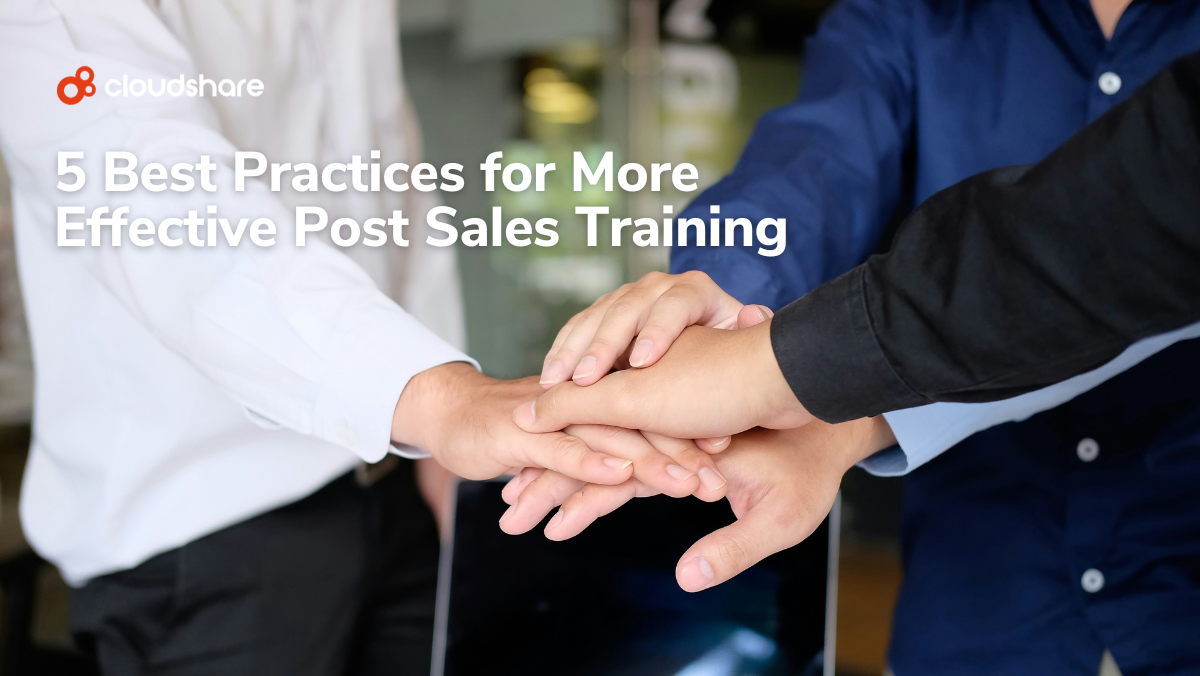
The days of static slide decks and generic sales pitches are long gone. Today’s buyers don’t just want to hear about software. They expect to experience it before they buy it. That’s why hands-on demo environments have become the gold standard in software sales. By letting prospects test-drive features in real time, sales teams can build trust faster, address pain points more directly, and create far more memorable interactions than any presentation could achieve.
But designing these demo environments isn’t as simple as spinning up a quick instance of your product. Without the right strategy, they can frustrate prospects, overload sales teams, and even hurt conversion rates.
Not sure where to start? Here are seven software demo best practices – dos and don’ts every sales organization should follow.
Key Takeaways
- Hands-on demo environments outperform traditional sales demos in terms of both engagement and effectiveness.
- Delivering an effective hands-on demo requires training, an understanding of your prospects, and the right approach.
- Businesses should avoid locally installed demos and shared/reused environments.
Do: Know the Difference Between Live and Virtual Demo Environments
Even though they both support a high degree of interactivity, presenting a virtual product demo via the cloud is very different than hosting a live product demo. Your sales reps need to understand this and adjust their approach accordingly.
| Live Demo Environments vs. Virtual Demo Environments | ||
| Live | Virtual | |
| Access | In-person at either the client’s or the vendor’s place of business | Online and accessible from anywhere |
| Scalability | Limited to one prospect or session per salesperson at a time | Supports multiple concurrent users and sessions |
| Customizability | Frequently requires extensive setup and configuration | Can be tailored to use case with minimal legwork |
| Setup | Complex and time-consuming to deploy and maintain | Easy to spin up and shut down |
| Analytics | Generally reliant on observation by the sales rep | Comprehensive, out-of-the-box user activity tracking |
| Cost | Includes travel, setup, and logistics | Usage-based |
| Engagement | Typically involves direct interaction with sales rep | Often self-directed, though the prospect may reach out with questions |
Don’t: Stick to a Rigid Script
Where hands-on demos are concerned, sales scripts should be viewed more as guidelines. A sales rep should know how to handle common objections and answer any questions a prospect might have about the product, but beyond that, they should allow things to progress naturally.
Do: Personalize
Each prospect has a unique ecosystem, needs, and pain points. Hands-on sales demo environments must reflect this. In addition to simulating a prospect’s infrastructure, demos should focus on the most relevant features to that prospect.
Don’t: Overwhelm People with Features
Keep your demos as focused and simple as possible. Identify single features that each address a prospect’s pain points.
Do: Test Demos Regularly
Regularly assess your demo platform and demo environments to ensure everything is working as it should. Combine this testing with usage analytics and feedback from prospects to identify potential weaknesses and bottlenecks.
Don’t: Rely on Local Installations
The less control you have over a product demo environment, the more things can go wrong. That’s why installing your demo software directly onto a prospect’s system is a bad move. There’s a nearly infinite number of ways that can go wrong, from tripping over security software to running face-first into misconfigurations.
Do: Develop Structured Experiences
In some cases, turning a prospect loose into a freeform sandbox environment is the smart play. Most of the time, however, they’ll just end up frustrated and lost. Design your demos as guided, interactive walkthroughs.
You can always leave a sandbox session at the end.
Don’t: Use Shared Demo Environments
Each prospect should have their own isolated demo environment. That way, if someone breaks something, it doesn’t bring down your entire sales process. It’s also considerably more difficult to create a personalized experience if multiple sales engineers are all vying for the same resources.
Do: Ensure Your Sales Team is Fully Trained
Even the most powerful product demo software will fall flat if nobody knows how to use it. Make sure onboarding is part of your sales enablement training to ensure your team gets the most out of their toolkit.
Don’t: Forget to Follow Up
After a prospect completes a sales demo, reach out to them directly. This can even be done through automation, provided you’ve configured your post-demo workflow with personalized messaging rather than a generic template.
Do: Encourage Prospects to Ask Questions
Often, the greatest shortcoming of virtual demos compared to live presentations is lack of communication. But it doesn’t have to be that way. Give prospects a way to connect with sales reps even during self-paced demos.
This can be done either via email or through messaging within the demo platform.
Don’t: Reuse Demo Environments
A virtual demo delivered via an environment-as-a-service (EaaS) platform can be provisioned and de-provisioned on demand. Make full use of that functionality, but make sure you personalize the experience every time. As with classic presentations, the last thing a prospect wants to see is another company’s logo.
Create More Effective Sales Demos with CloudShare
Hands-on demos are one of the most effective ways to prove value to a prospect. They transform curiosity into conviction by showing exactly how your product solves real problems in the prospect’s own context. When structured thoughtfully, they reduce friction in the sales cycle, build confidence, and accelerate decisions.
By following the dos and don’ts above, you already know how to create an effective sales demo environment.
Now it’s time to take it to the next level with CloudShare. With virtual demo environments that spin up in minutes, built-in analytics, and the ability to customize every session, your sales team can deliver consistent, high-impact experiences that scale. Book a demo with CloudShare and start turning hands-on demos into your most reliable conversion engine.
Related Content: Virtual Hands-on Lab Technology: Key Considerations for Training Organizations
FAQs
What is the difference between a demo environment and a production environment?
A demo environment is a live simulation of a product or service designed as a showcase for prospects. A production environment is where that product or service is actually deployed and used.
How can a virtual demo environment improve sales conversion rates?
A virtual demo environment provides prospects with interactive, personalized, on-demand experiences that provide a firsthand look at your software’s value, dramatically increasing purchasing confidence and addressing potential objections.
What tools can I use to build an interactive software demo?
CloudShare’s virtual hands-on labs empower you to build high-impact hands-on demos in minutes while also serving as a powerful platform for both training and onboarding.
Why is it important to customize demo environments for different personas?
Every business has different needs, requirements, and pain points. Features that are relevant to one persona might not matter to another. Failure to account for these facts may result in demos that are ineffective or even alienating to prospects.
What metrics should I track to evaluate the success of demo environments?
To assess how well prospects engage with your demo environments, track metrics like completion rate, time to completion, user feedback scores, and quit points. Conversion rate, deal value, and onboarding time can all help evaluate the impact demo environments have had on your sales cycle.




